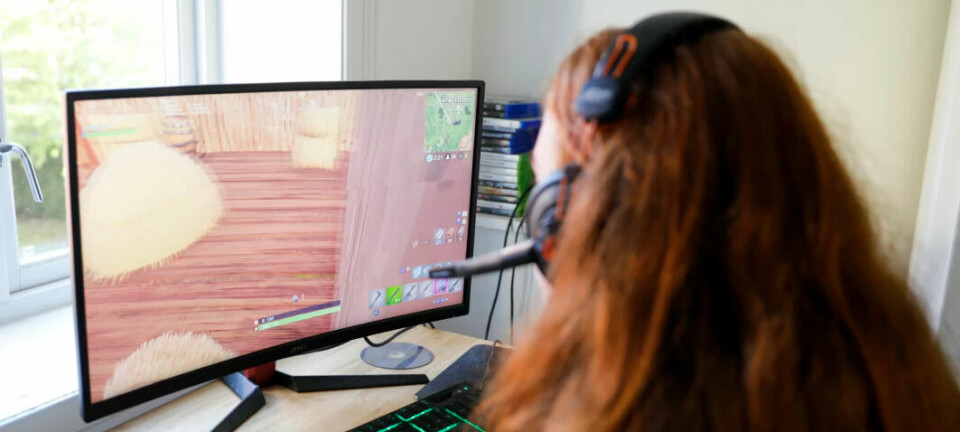
How online games have become big business
Parents need to be vigilant, according to researcher.
“Video games are entertainment for children, but they can also become a huge business for the companies behind them,” psychologist Rune Aune Mentzoni says.
He researches gaming at the University of Bergen.
Although many games can be downloaded for free, offers for new weapons and cooler characters soon pop up.
Results in a pressure to buy
“These types of in-game purchases are called microtransactions,” Mentzoni says.
They emerged with mobile games that were free to download. The purchases made it possible to finance the games.
“In the past, it was a matter of a few coins here and there, but the amounts are becoming larger and more intrusive. A purchase can cost up to 100 USD,” Mentzoni says.
Purchases are divided into two groups.
The first is cosmetic items. This can include costumes for your character or new appearances – skins – for weapons and vehicles.
The second is improvements like more powerful weapons in shooting games or better players in a football game.
“Buying advantages means you can get further in the game. It simply becomes less democratic,” Mentzoni says.
The point of games is usually to get as far as possible.
“And then the pressure to buy grows. If you want to keep up, you often have to pay,” he says.

Research also shows that children pay to become popular in computer games.
Gaming or gambling?
Certain games offer the purchase of lottery tickets.
“For example, in football games, where you can buy packs with unknown player cards,” Mentzoni says.
These lottery tickets are called loot boxes – and it is impossible to know what you will get for your money.
“It’s a form of gambling and should be regulated as gambling. The games also have low age limits. They go down to 3 or 4 years,” Mentzoni says.
Children generally do not have smartphones and cards readily available.
“But it’s not unheard of that children play and order using their parents' accounts,” he says.
He offers more advice to avoid unexpected purchase sums.
Get into this
“Parents should familiarise themselves with how payments work in games and decide on a reasonable monthly spending limit for their child,” Mentzoni says.
Games frequently tempt players with improvements and cooler appearances.
“It’s good to have a maximum spending limit. You can set payment restrictions and parental controls,” he advises.
There are many guides online that can help parents set up parental controls.
Mentzoni goes on to say that it is not necessarily wrong to spend money on games that are free to download.
“If no one paid, the game would cease to exist,” he says.

Children need help to understand the value of money
Mentzoni is critical of the purchasing pressure children are subjected to.
Most viewed
“They’re bombarded with advertising and enticing offers, yet lack the understanding of how much money is actually being spent,” he says.
It is important to talk about what money is and that it is limited.
“Can in-game purchases be a golden opportunity to start this conversation?”
“Both yes and no. It’s a natural introduction, but games often conceal the actual amount of money spent,” he says.
“How so?”
“Some games use fictitious currencies. You buy them with real money but receive diamonds or crystals with different names and values in return,” he says.
Experts at triggering our desire to buy
When we pay for something, scientists use the term ‘pain’.
“The pain of paying is greatest when you hand over a physical banknote. You see the money disappearing. The pain lessens with card payments, where the money is invisible,” Mentzoni says.
In the world of gaming, the pain is even less.
“The fictitious currency seems less painful, and it becomes more difficult to keep track of spending,” he says.
Mentzoni notes that some have an easy time resisting purchases, while others jump at them.
“This depends on our impulse control. Children typically have lower impulse control, so adults need to step in. Children face companies that are experts at triggering the desire to buy,” he says.
Mentzoni is critical of the term microtransactions.
“It suggests small and insignificant amounts, but that’s not the case today. The prices are high, and there’s no limit to how much you can buy,” he says.
———
Translated by Alette Bjordal Gjellesvik
Read the Norwegian version of this article on forskning.no







































